Tom's Hardware Verdict
The Cooler Master V750 Gold power supply is quite expensive for what it has to offer. With less money, you can find better options.
Pros
- +
Full power at 47 degrees Celsius
- +
High build quality
- +
Long hold-up time
- +
10-year warranty
- +
2x EPS and 4x PCIe connectors
- +
Fully modular
Cons
- -
High price
- -
No MOV and NTC thermistor
- -
Mediocre transient response
- -
Noisy once stressed
- -
Small distance between peripheral connectors
Why you can trust Tom's Hardware
The Cooler Master V750 Gold has modest lineage. The Cooler Master V850, its sibling, has high build quality and registers a satisfactory overall performance, but it can be noisy, under harsh operating conditions, and to make matters worse, it is expensive. With notably less money, you can get a better power supply, including the Seasonic Focus Plus Gold with similar capacity, and the Corsair RM750x and RM750.
We had reviewed the previous generation V750 model back in 2015. Enhance Electronics provided the platform, which featured compact dimensions, thanks to a "3D" circuit that was used, which was just a fancy description for a daughter-board used to transfer the +12V rail to the modular PCB.
The newer V Gold units are made by Chicony Electronics, and the line consists of four models, with capacities ranging from 550W to 850W. They are fully modular, and besides 80 PLUS, they are also certified by Cybenetics, with all of them achieving ETA-A efficiency certifications. In the noise output section, Cybenetics rated them from LAMBDA-S++ (V850) to LAMBDA-A (V550).

Product Photos






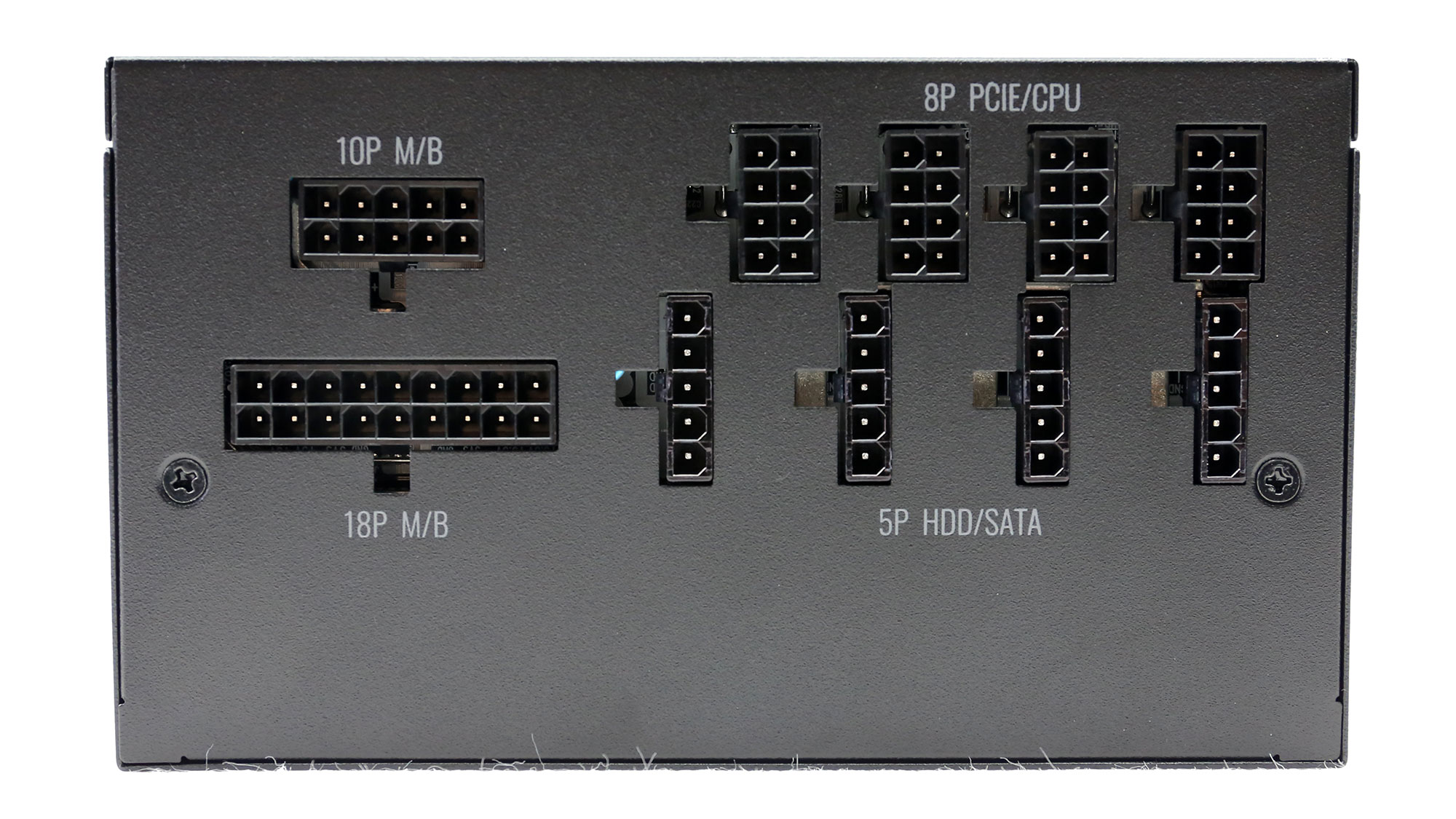

The V750 Gold is the second strongest member of the line. A good 750W power supply can easily support a potent system, equipped with a high-end CPU and a strong GPU (e.g., Nvidia RTX 2080Ti or AMD RX 5700 XT). If you need to use a pair of 2080Ti cards, along with an AMD Ryzen 9 or an Intel i9 CPU, you will have to get a power supply with at least 1000W power, to have peace of mind. A 2080Ti can consume up to 250W of power, so two of them reach 500W, while a Ryzen 9 3900x is at 150W, with the i9-9900K hitting more than 220W even at stock speeds and settings.

Product Photos






Specifications
|
Manufacturer (OEM) |
Chicony Electronics |
|
Max. DC Output |
750W |
|
Efficiency |
80 PLUS Gold, ETA-A (88-91%) |
|
Noise |
LAMBDA-S+ (35-40 dB[A]) |
|
Modular |
✓ (Fully) |
|
Intel C6/C7 Power State Support |
✓ |
|
Operating Temperature (Continuous Full Load) |
0 - 50°C |
|
Over Voltage Protection |
✓ |
|
Under Voltage Protection |
✓ |
|
Over Power Protection |
✓ |
|
Over Current (+12V) Protection |
✓ |
|
Over Temperature Protection |
✓ |
|
Short Circuit Protection |
✓ |
|
Surge Protection | ✗ |
|
Inrush Current Protection | ✗ |
|
Fan Failure Protection |
✗ |
|
No Load Operation |
✓ |
|
Cooling | 135mm Fluid Dynamic Bearing Fan (SAC4H2H) |
|
Semi-Passive Operation |
✓ (selectable) |
|
Dimensions (W x H x D) |
152 x 87 x 162mm |
|
Weight |
1.635 kg (3.60 lb) |
|
Form Factor |
ATX12V v2.4, EPS 2.92 |
|
Warranty |
10 Years |
Power Specifications
| Rail | 3.3V | 5V | 12V | 5VSB | -12V | |
|---|---|---|---|---|---|---|
| Max. Power | Amps | 20 | 20 | 62 | 0.3 | 0.5 |
| Watts | 130 | 744 | 15 | 3.6 | ||
| Total Max. Power (W) | 750 |
Cables & Connectors
| Modular Cables | Cable Count | Connector Count (Total) | Gauge | In Cable Capacitors |
|---|---|---|---|---|
| ATX connector 20+4 pin (650mm) | 1 | 1 | 18-22AWG | No |
| 4+4 pin EPS12V (650mm) | 1 | 1 | 18AWG | No |
| 8 pin EPS12V (650mm) | 1 | 1 | 18AWG | No |
| 6+2 pin PCIe (560mm+120mm) | 2 | 4 | 18AWG | No |
| SATA (500mm+120mm+120mm+120mm) | 3 | 12 | 18AWG | No |
| 4 pin Molex (500mm+120mm+120mm+120mm) | 1 | 4 | 18AWG | No |
| FDD Adapter (125mm) | 1 | 1 | 22AWG | No |
| AC Power Cord (1350mm) - C13 coupler | 1 | 1 | 18AWG | - |
There are two EPS connectors and four PCIe ones, which are more than enough for a 750W PSU. The number of peripheral connectors is satisfactory as well, with twelve SATA and four 4-pin Molex connectors. The only issue is the small distance between the connectors above. Finally, there are no in-cable caps, which can make the PSU installation process tough, especially in chassis that don't have large perforations and/or enough space behind the mainboard's tray, for cable routing.
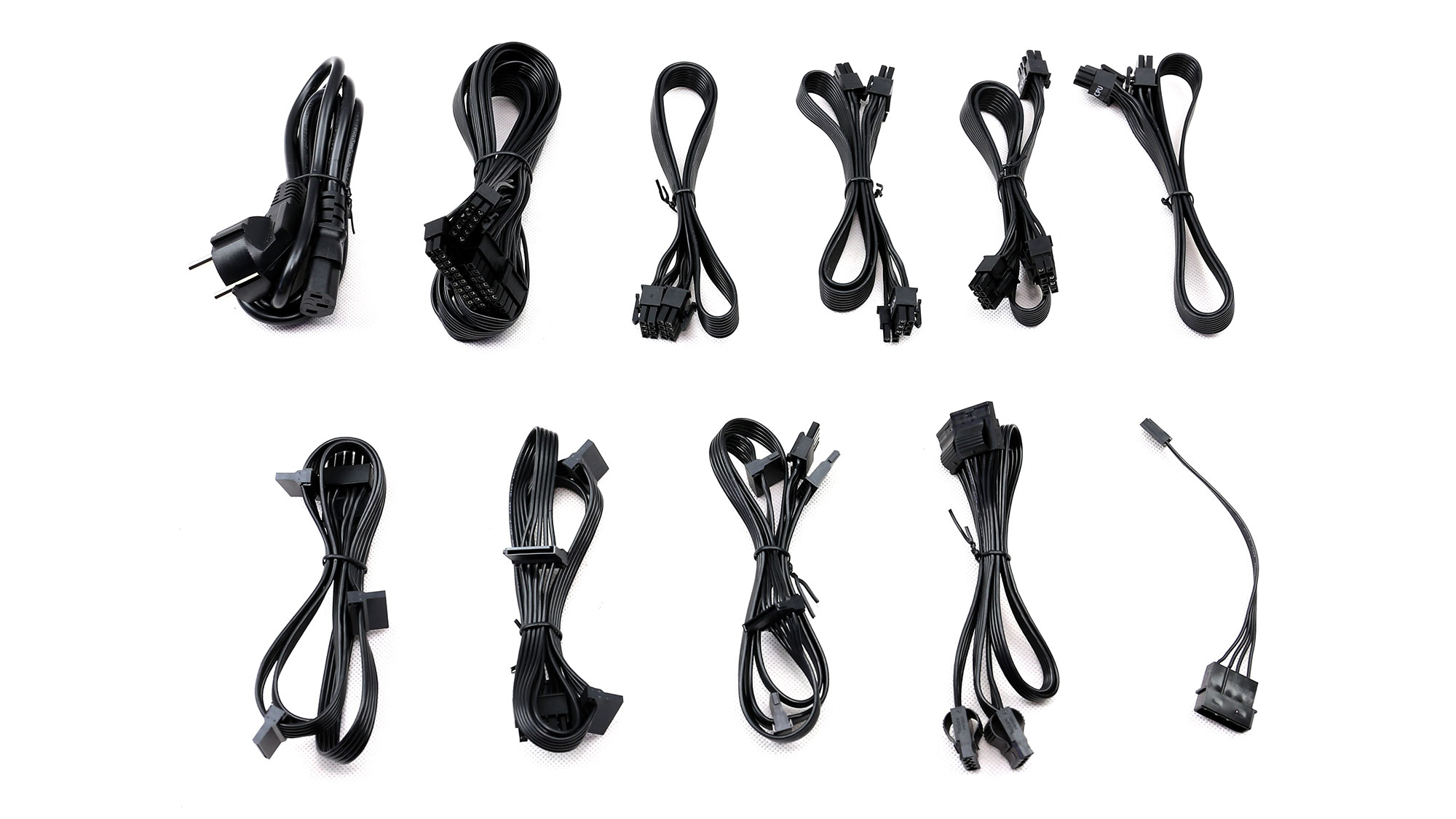
Cable Photos



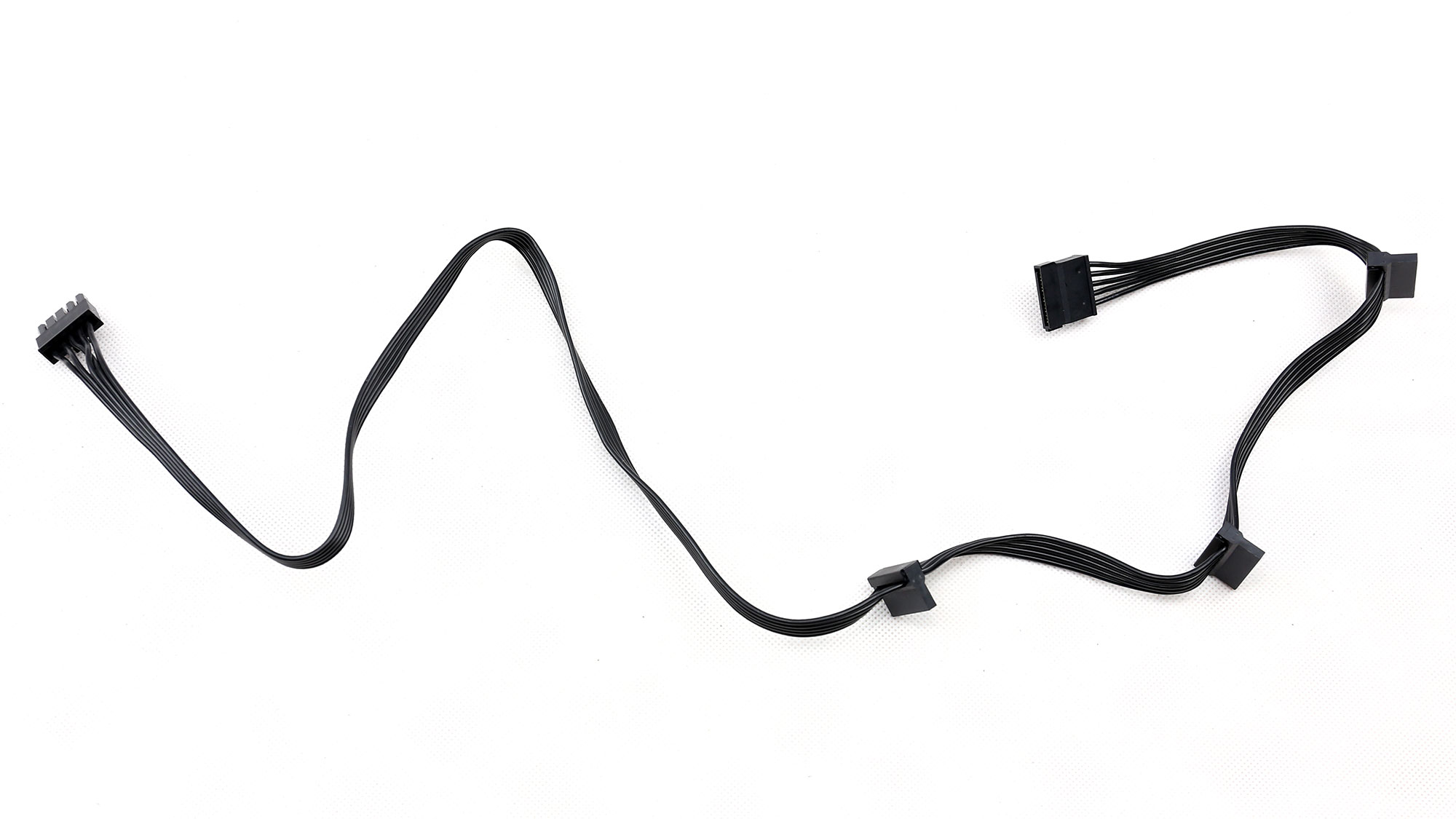
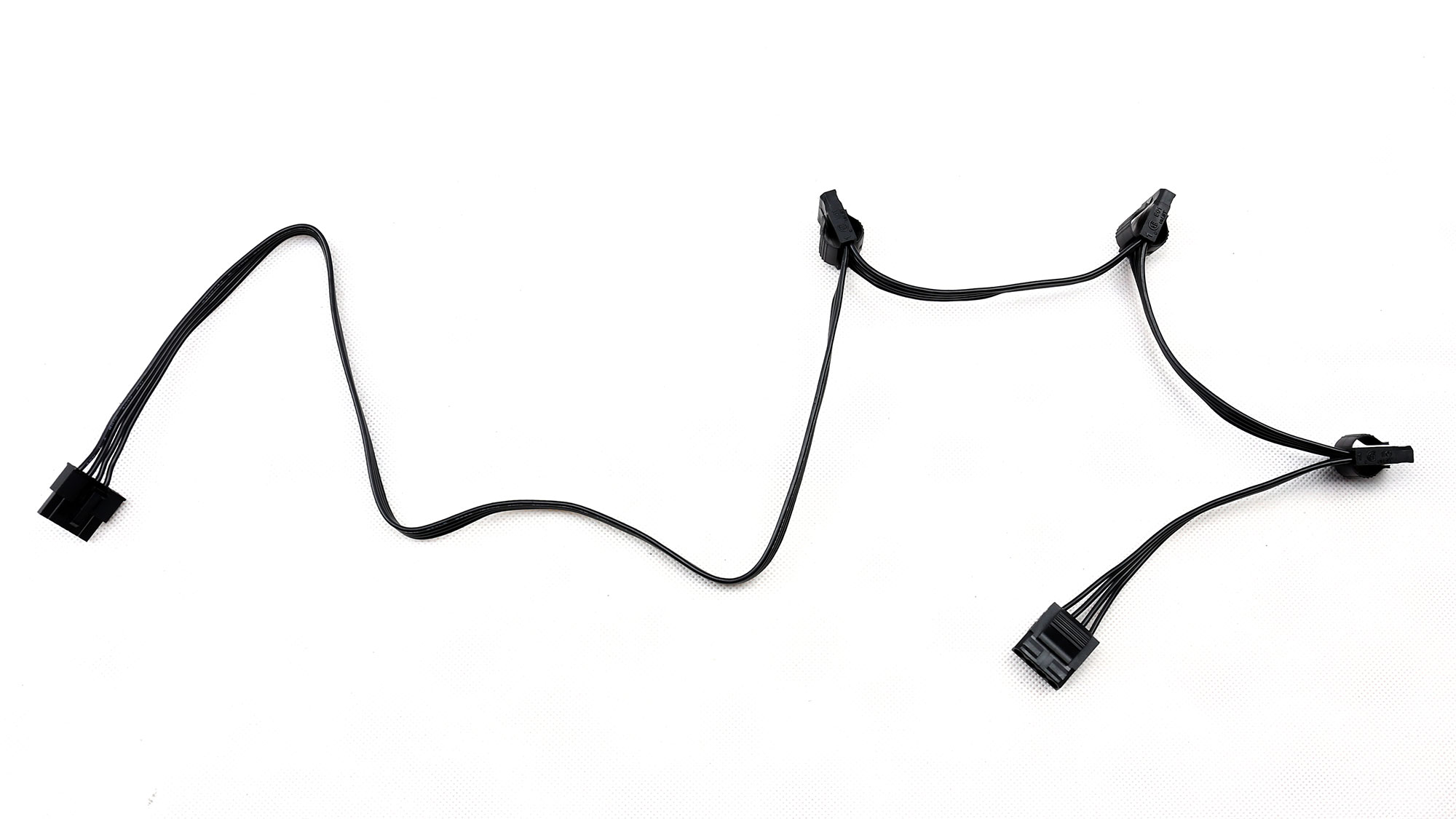


Component Analysis
We strongly encourage you to have a look at our PSUs 101 article, which provides valuable information about PSUs and their operation, allowing you to better understand the components we're about to discuss.
| General Data | - |
| Manufacturer (OEM) | Chicony Electronics |
| PCB Type | Single Side |
| Primary Side | - |
| Transient Filter | 5x Y caps, 2x X caps, 2x CM chokes |
| Inrush Protection | - |
| Bridge Rectifier(s) | 2x Lite-On GBU15JL (600V, 15A @ 115°C) |
| APFC MOSFETS | 2x Infineon IPP60R120P7 (650V, 16A @ 100°C, 0.12Ohm) |
| APFC Boost Diode | 1x CREE C3D08060A (600V, 8A @ 152 °C) |
| Hold-up Cap(s) | 1x Nichicon (450V, 560uF, 2,000h @ 105°C, GL) |
| Main Switchers | 2x Toshiba TK16A60W (600V, 15.8A @ 150°C, 0.19Ohm) |
| APFC Controller | Infineon ICE3PCS03G |
| Resonant Controllers | MPS HR1000A & 2x MPS MP6903 (Installed on the secondary side) |
| Topology | Primary side: Half Bridge & LLC resonant converter Secondary side: Synchronous Rectification & DC-DC converters |
| Secondary Side | - |
| +12V MOSFETS | 6x Nexperia PSMN2R6-40YS (40V, 100A @ 100°C, 5.3mOhm @ 175°C) |
| 5V & 3.3V | DC-DC Converters:4x Advanced Power AP0403GH (30V, 50A @ 100°C, 4.5mOhm) & 2x Advanced Power AP3N4R0H (30V, 56A @ 100°C, 4mOhm) PWM Controllers: 2x APW7160A |
| Filtering Capacitors |
Electrolytics: 4x Rubycon (6 - 10,000h @ 105°C, ZLH), Nippon Chemi-con (5 - 6,000h @ 105°C, KZH), Nippon Chemi-con (4 - 10,000h @ 105°C, KY), Nichicon (5 - 6,000h @ 105°C, HV) Polymers: FPCAP, Nichicon (LG), Nippon Chemi-con |
| Supervisor IC | CP006WD |
| Fan Model | Apistek SAC4H2H (135 mm, 0.5 A, Fluid Dynamic Bearing Fan) |
| 5VSB Circuit | - |
| Rectifier | On Semiconductor MBR20100CT SBR (100V, 10A @ 133°C) & STMicroelectronics STD4N80K5 FET (800V, 1.7A @ 100°C) |
| Standby PWM Controller | 400BBBBB2 PAJH |
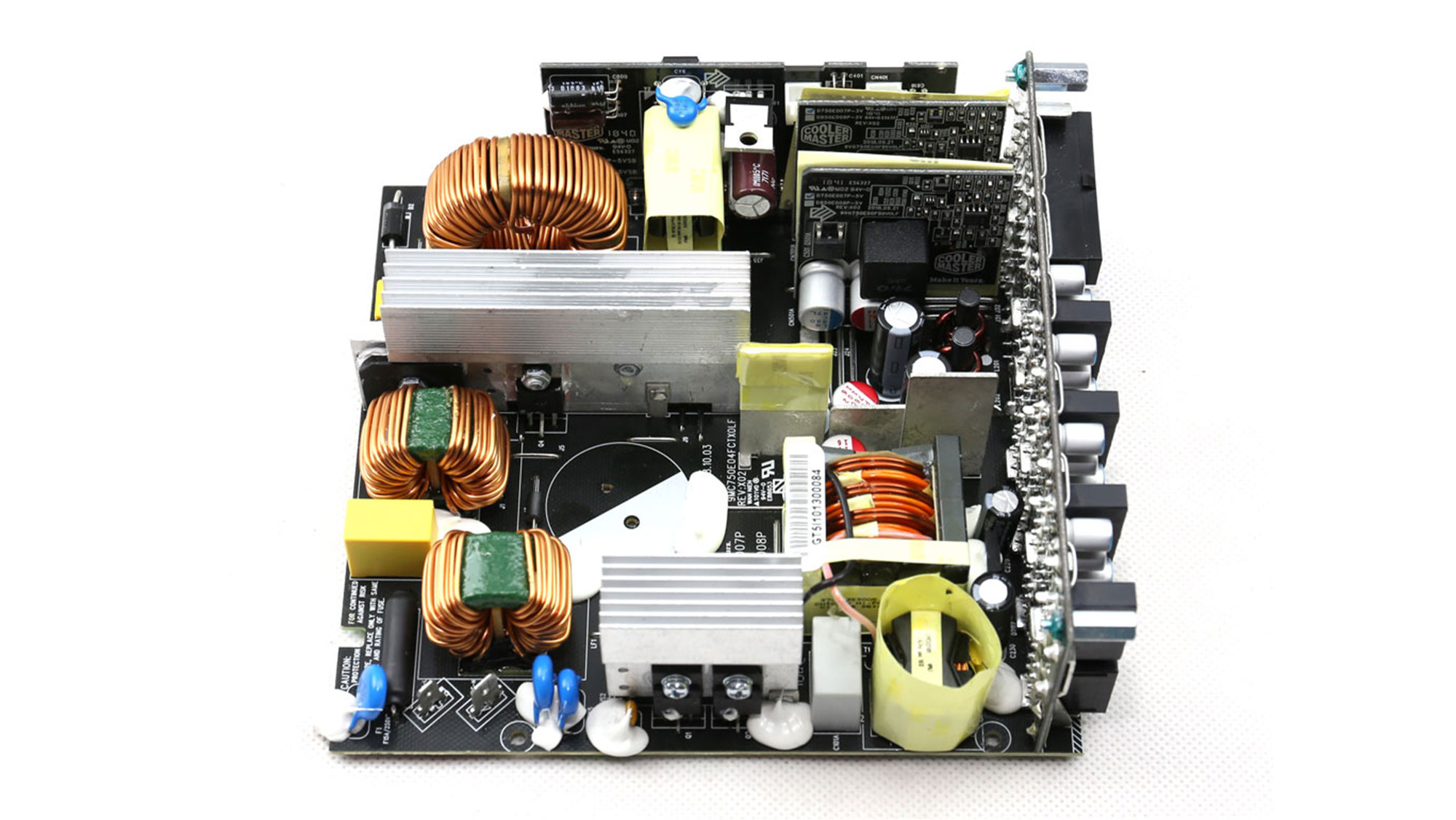
Overall Photos



On the primary side, we find a half-bridge topology and an LLC resonant converter, for increased efficiency. The heat sinks are not large, and the design looks clean with enough clearance between components for good airflow. Overall, this is a well-made platform featuring a contemporary design.
Get Tom's Hardware's best news and in-depth reviews, straight to your inbox.
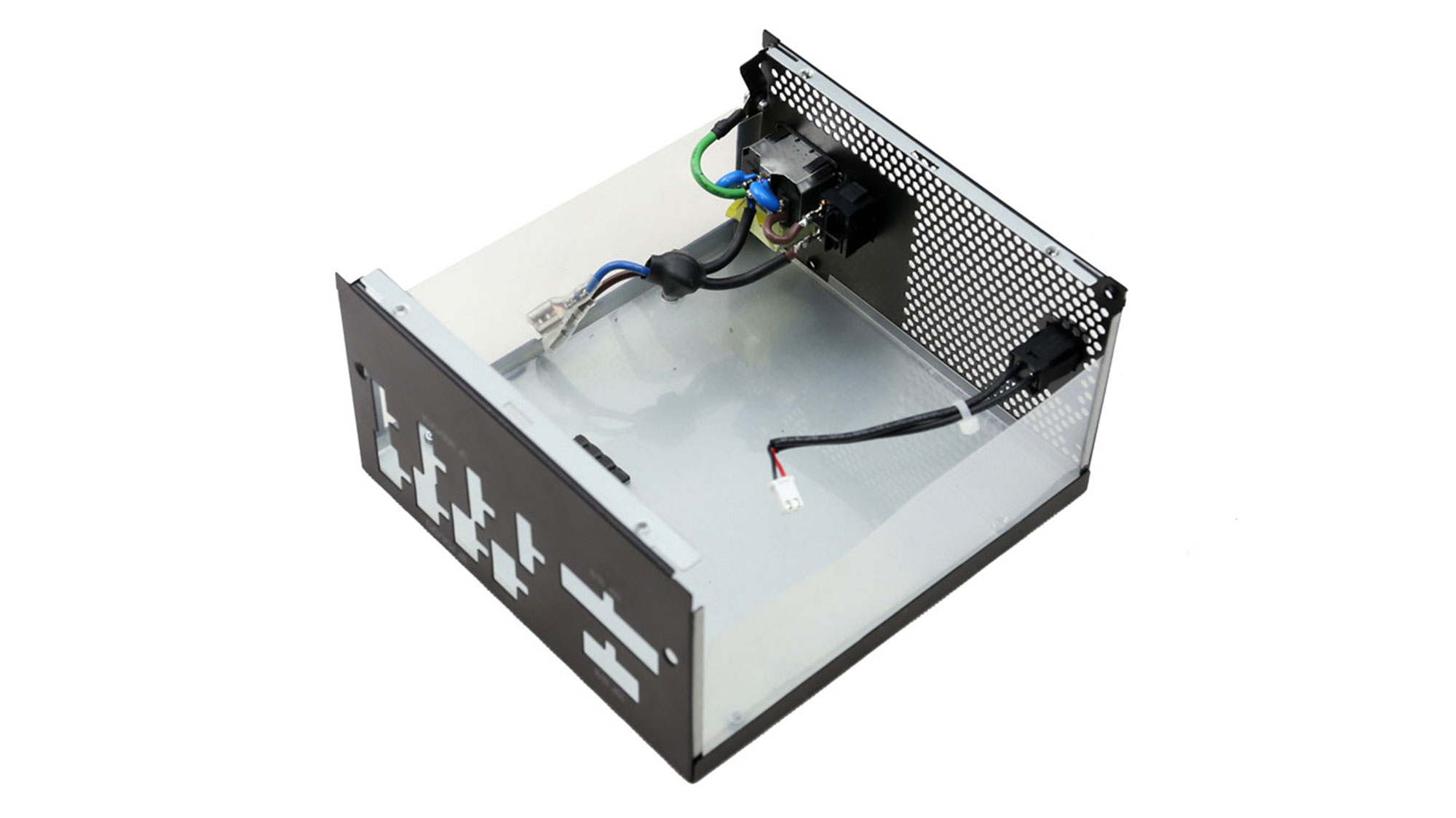
Transient filter and bridge rectifiers



There is no MOV in the transient filter, which is a shame. Moreover, there is no inrush current limiter in the form of an NTC thermistor. So we expect high inrush current readings.

Bridge Rectifiers

Both bridge rectifiers are bolted onto the primary heat sink.

APFC Converter



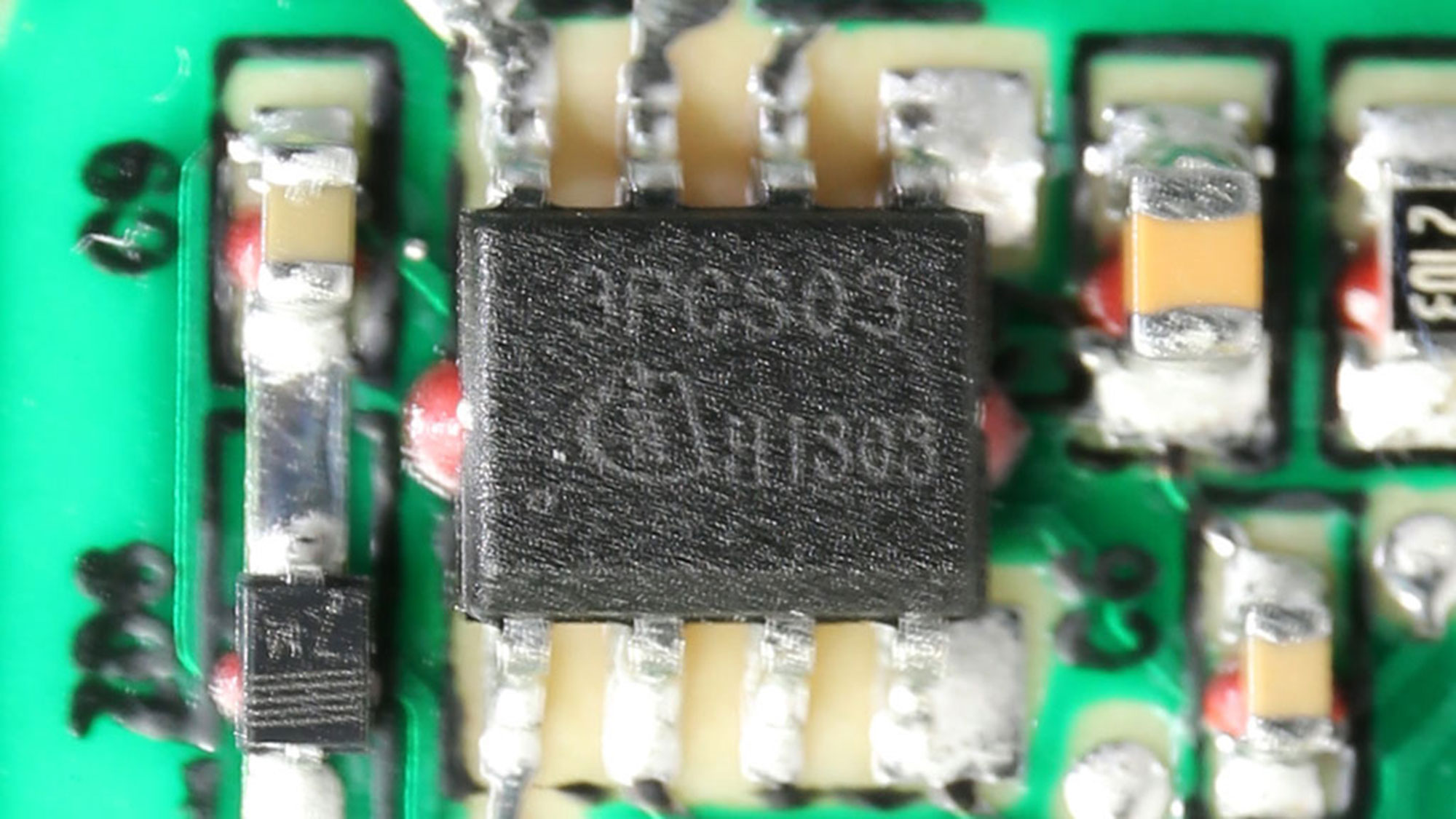
The APFC converter uses a quality bulk cap, rated at 450V. The corresponding controller is provided by Infineon (ICE3PCS03G).

Main FETs and primary transformer





The main FETs are arranged in a half-bridge topology, and an LLC resonant decreases the switching losses. The resonant controller is an MPS HR1000A IC, accompanied by two MP6903 ICs.

12V FETs and VRMs


The +12V FETs are installed on the solder side of the PCB. The same rail feeds a pair of DC-DC converters which generate the minor rails.

Filtering caps




All filtering caps, both electrolytic and polymer, are of high quality and are provided by Japanese manufacturers.

Modular board front


The modular board is enhanced by bus-bars, for lower losses on power transfers. Many polymer caps are also installed for ripple filtering purposes.

5VSB Circuit

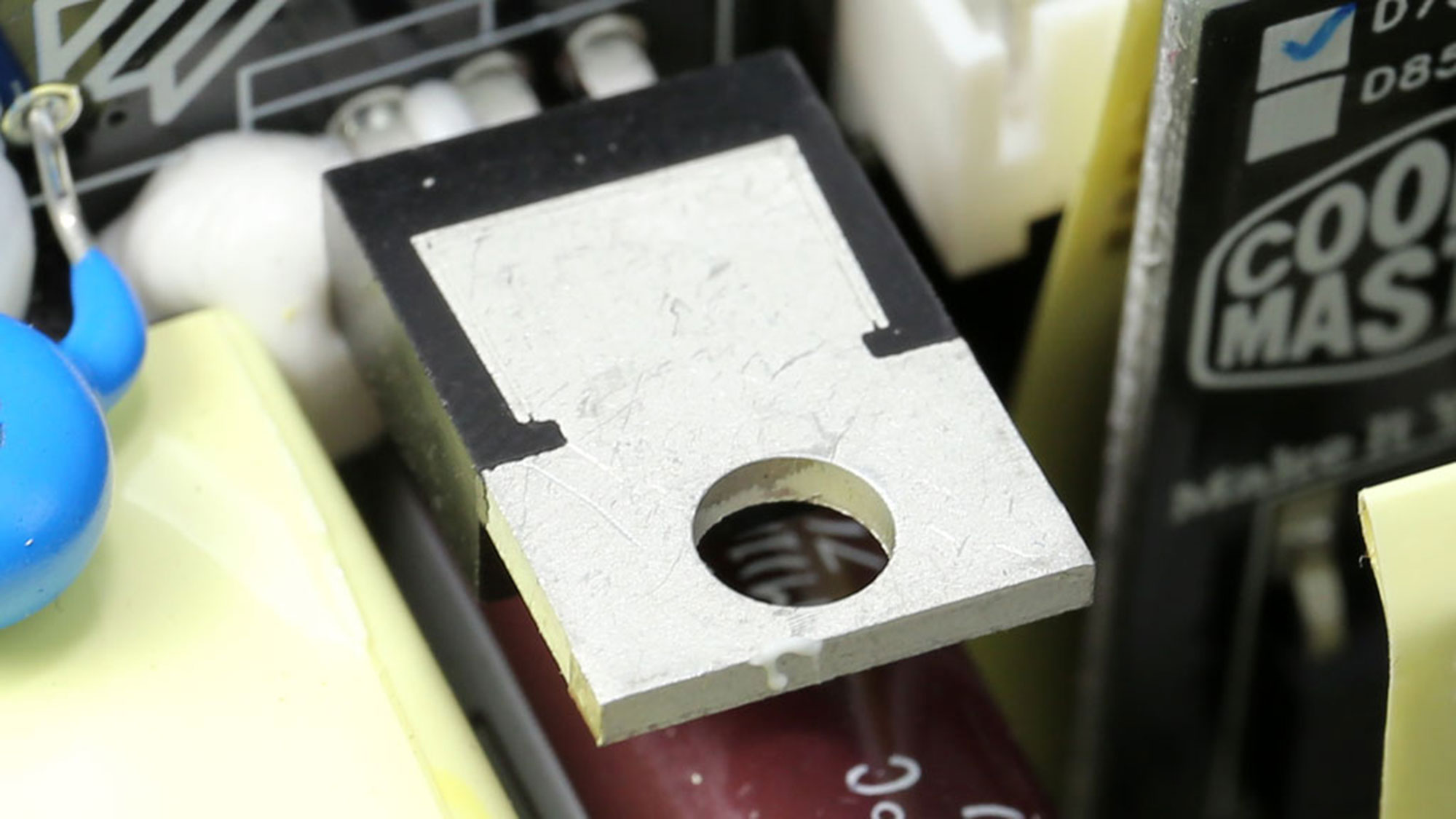


A large daughter-board hosts the 5VSB circuit.

The supervisor IC, responsible for the protection features, is a CP006WD.

Soldering quality
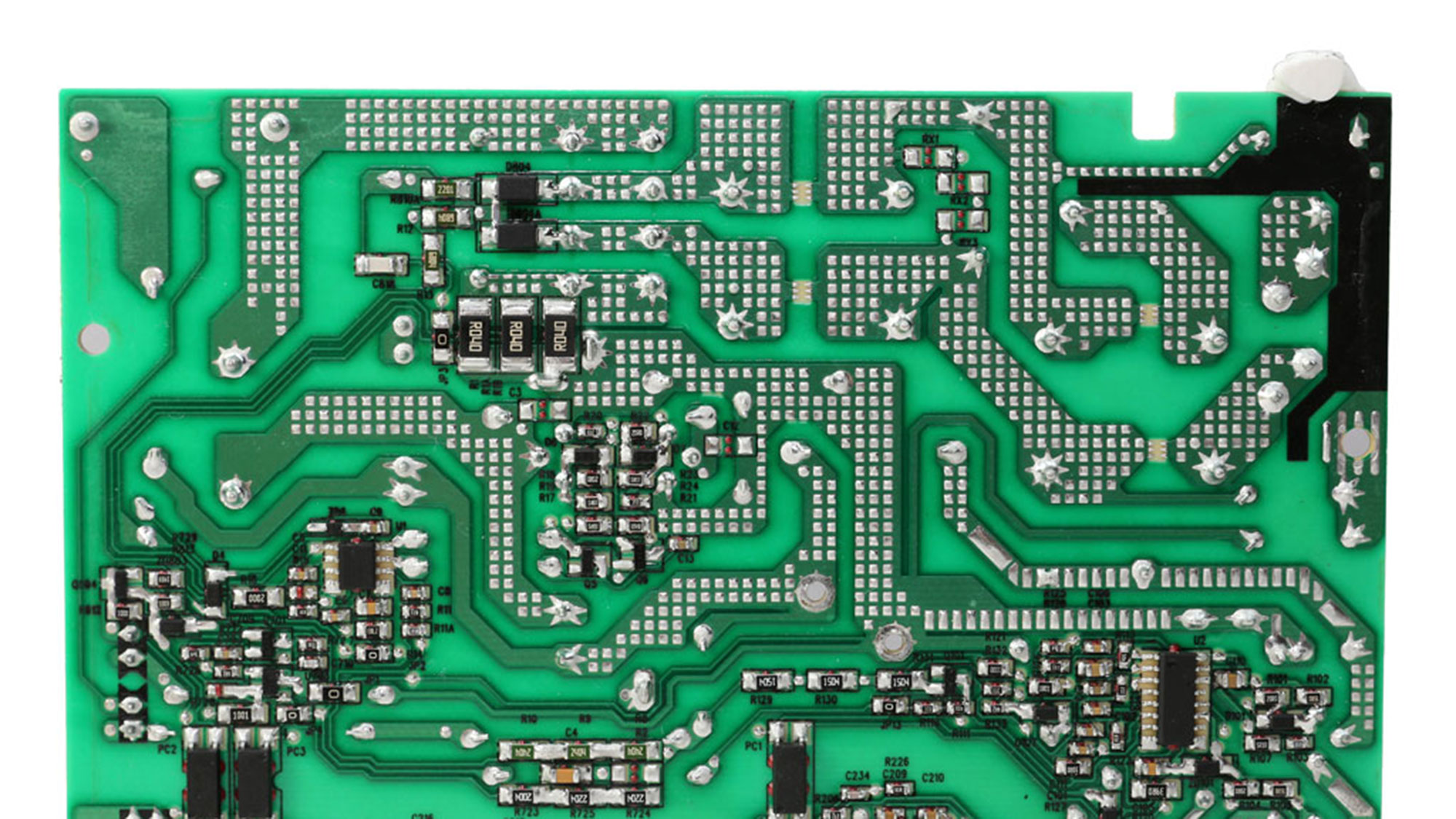


The soldering quality is good.

Cooling fan

The Apistek fan uses a fluid dynamic bearing, for lower noise and increased lifetime.
MORE: Best Power Supplies
MORE: How We Test Power Supplies
MORE: All Power Supply Content
Current page: Specifications and Part Analysis
Next Page Load Regulation, Hold-Up Time, Inrush Current, Efficiency and Noise
Aris Mpitziopoulos is a contributing editor at Tom's Hardware, covering PSUs.
-
Dark Lord of Tech Another V series 750w from Cooler Master :unsure: Chicony , not a good choice.Reply
Thanks Aris , great review.